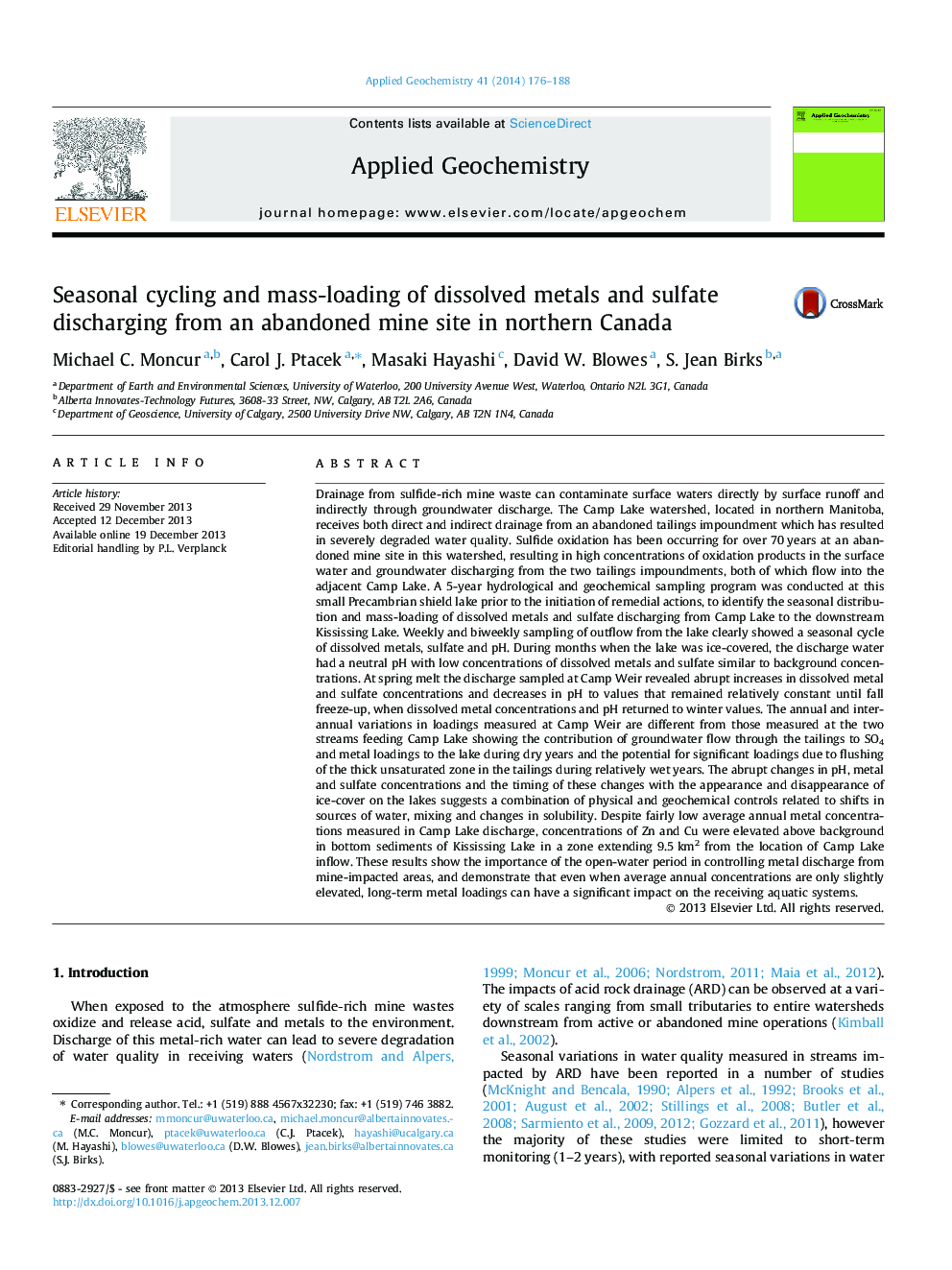| کد مقاله | کد نشریه | سال انتشار | مقاله انگلیسی | نسخه تمام متن |
|---|---|---|---|---|
| 4435875 | 1620250 | 2014 | 13 صفحه PDF | دانلود رایگان |
• 50 years post-closure metals, SO4 and acid still enter ground- and surface-waters.
• Changes in pH, metal and SO4 coincide with the presence of ice-cover on the lake.
• Seasonal cycles suggest both physical and geochemical controls on solubility.
• Flushing of the unsaturated zone lead to SO4 and metal loading during wet periods.
• Zn and Cu were elevated in downstream lake bottom sediments over a 9.5 km2 area.
Drainage from sulfide-rich mine waste can contaminate surface waters directly by surface runoff and indirectly through groundwater discharge. The Camp Lake watershed, located in northern Manitoba, receives both direct and indirect drainage from an abandoned tailings impoundment which has resulted in severely degraded water quality. Sulfide oxidation has been occurring for over 70 years at an abandoned mine site in this watershed, resulting in high concentrations of oxidation products in the surface water and groundwater discharging from the two tailings impoundments, both of which flow into the adjacent Camp Lake. A 5-year hydrological and geochemical sampling program was conducted at this small Precambrian shield lake prior to the initiation of remedial actions, to identify the seasonal distribution and mass-loading of dissolved metals and sulfate discharging from Camp Lake to the downstream Kississing Lake. Weekly and biweekly sampling of outflow from the lake clearly showed a seasonal cycle of dissolved metals, sulfate and pH. During months when the lake was ice-covered, the discharge water had a neutral pH with low concentrations of dissolved metals and sulfate similar to background concentrations. At spring melt the discharge sampled at Camp Weir revealed abrupt increases in dissolved metal and sulfate concentrations and decreases in pH to values that remained relatively constant until fall freeze-up, when dissolved metal concentrations and pH returned to winter values. The annual and interannual variations in loadings measured at Camp Weir are different from those measured at the two streams feeding Camp Lake showing the contribution of groundwater flow through the tailings to SO4 and metal loadings to the lake during dry years and the potential for significant loadings due to flushing of the thick unsaturated zone in the tailings during relatively wet years. The abrupt changes in pH, metal and sulfate concentrations and the timing of these changes with the appearance and disappearance of ice-cover on the lakes suggests a combination of physical and geochemical controls related to shifts in sources of water, mixing and changes in solubility. Despite fairly low average annual metal concentrations measured in Camp Lake discharge, concentrations of Zn and Cu were elevated above background in bottom sediments of Kississing Lake in a zone extending 9.5 km2 from the location of Camp Lake inflow. These results show the importance of the open-water period in controlling metal discharge from mine-impacted areas, and demonstrate that even when average annual concentrations are only slightly elevated, long-term metal loadings can have a significant impact on the receiving aquatic systems.
Figure optionsDownload as PowerPoint slide
Journal: Applied Geochemistry - Volume 41, February 2014, Pages 176–188
